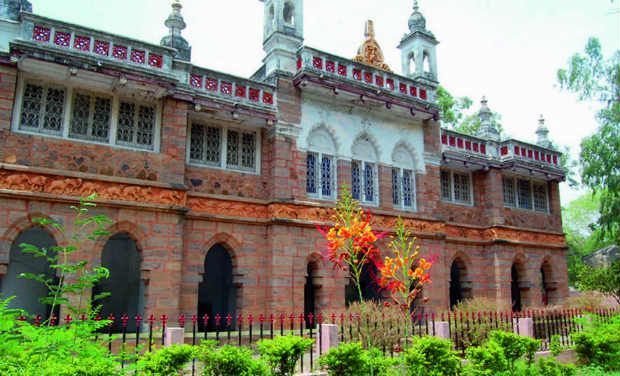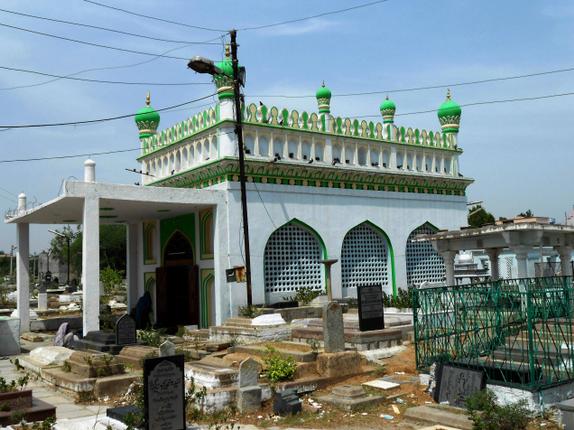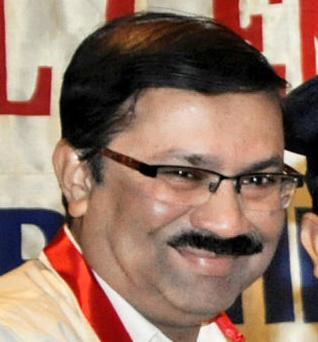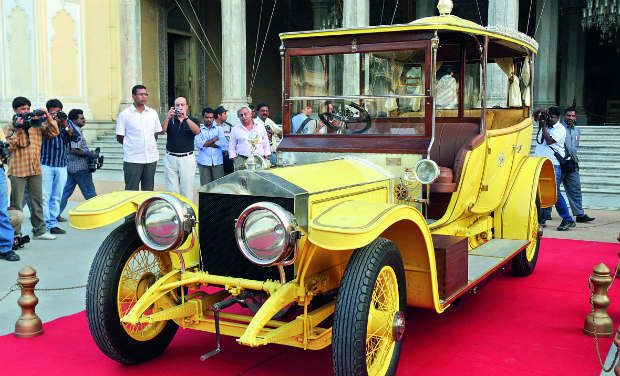Rolls-Royce Motor Cars owes much to India. The sub-continent has been the ultimate destination of many of the early cars, including the 40/50hp Silver Ghosts and Phantoms built during the first half of the twentieth century.
Proving ground
The extremes of climate and terrain offered the perfect proving ground for that which was a relatively new form of machine and transport. To gain a reputation for unequalled reliability amongst the royalty and rich of India was praise indeed. The number of surviving Rolls-Royce motor cars from those pioneer days remain as a testimony to their success in that era.
The connections with Rolls-Royce in India could well have begun when the parents of the Hon. Charles Stuart Rolls, Lord and Lady Llangattock, attended the 1902/03 celebrations of the Coronation Durbar in Delhi, two years before the formation of Rolls-Royce Ltd. They must have told their son Charles, who was selling French cars in London at the time, of the burgeoning interest in motoring amongst the fabulously wealthy Indian potentates.
Ghosts and kings
In 1907, an English businessman with interests in India took a 40/50hp to Bombay. The car christened ‘Pearl of the East’ was to participate in the 620-mile Reliability Trials, spread over six mountain passes of the Ghats between Bombay and Kolhapur. The Rolls-Royce performed without fault, and in winning its class was awarded the Mysore Cup. H.H. the Maharaja of Gwalior purchased the car and the resultant publicity did much to enhance the reputation and sales of the model that became widely known as the ‘Silver Ghost’ among Indian royal families.
By 1911, Rolls-Royce had already established a following and eight identical Silver Ghosts with landaulette coachwork were ordered for use at the Imperial Delhi Durbar.
In Hyderabad
Legend has it that Mir Osman Ali Khan, the VII Nizam of Hyderabad — famously named as the all-time richest Indian, and the 5th all-time wealthiest man to have ever lived — owned over 50 Rolls-Royce motor cars.
What is certain is that just over 100 years ago, a priceless Rolls Royce Silver Ghost Throne car was delivered to the Nizam’s doorstep. Hyderabadis were thus able to celebrate the arrival of the first imported car into the city…..This elegant vintage car with its rich canary yellow body and gold mountings, lights and silver-finished roof still survives to this day.
Also, in pre-war British India, the majority of coachwork for the Rolls-Royce chassis was supplied by specialist, coachbuilding firms.
The Rolls-Royce chassis, with its inherent strength and rigidity enabled these coachbuilders to produce bodies that catered for many different tasks. Formal limousines, rakish tourers, shooting cars, transport for wives, for servants, even religious artefacts. Some designs were bold, some subdued and some garish, but all built with care and attention that gave a long life of service to be enjoyed by their owners.
The Rolls-Royce sales department recorded a vast array of special silver and gold fittings, for delivery to ‘Indian’ cars. Purdah glass in the formal limousines, sirens, thermos flasks, Stephen Grebel hunting lamps, gun racks, ivory steering wheels and control knobs, were some of the special requests that Rolls-Royce and their coachbuilders were happy to comply with. Even a servant’s seat was occasionally fitted to the near side running board. The variety and choice of accessories was amazing and no trouble was spared in providing the customer with his every requirement.
It was usual to finish the bonnet in polished aluminium to prevent the blistering Hyderabad heat from cracking the paintwork, with louvers often specified to assist the escape of engine heat. The finishing touches of flag staffs and emblazoned heraldry added to the individual character of the impressive appearance of the car. Throughout the 1920s and 1930s, the respect and enthusiasm for Rolls-Royce cars remained strong, the large 40/50hp cars being joined by the smaller 20hp of 1922 and its successors, ending with the Wraith of 1938.
In 1931, Rolls-Royce bought Bentley Motors Ltd. The name of Bentley was appended to a smaller, faster, generally more sporting car than other Rolls-Royce models. It was a success with customers who wanted a more ‘personal’ vehicle to add to their garages.
As the threat of World War II became a reality, the importation of cars ceased. Post-war India emerged into a different climate with Independence proclaimed in 1947. Sales of the new models made a good start, with the Gaekwar of Baroda ordering six Bentleys and the Maharaja of Mysore, acquiring nine Bentleys and eight Rolls-Royce Silver Wraiths. But times were changing, and the wealth of India was being redistributed.
After the war, it was the captains of commerce and industry who would be the new owners of motor cars from Rolls-Royce. Now, rewards of perseverance, dedication, vision and sheer hard work are enabling the men and women of India to realise their intuitive appreciation for craftsmanship and design without compromise, in the ownership of a Rolls-Royce car.
The Rolls-Royce Silver Ghost was the ideal luxury car for the India of nearly a century ago, and today’s Goodwood-built motor cars continue that enviable reputation for the India of today with bespoke cars. No expense has been spared and no compromise made to produce a car that both inspires and cossets its driver and passengers. The engine is virtually silent in operation, yet will accelerate the car faster than many sports cars.
A Rolls-Royce motor car is literally for all seasons, both in terms of climate and driving usage. It is subjected to the famous “monsoon test” where high pressure water is sprayed and technicians inspect the car for moisture. The mantra: should one drop of water be found, the car is sent back to the assembly line.
It is this sort of attention to detail which Rolls-Royce founder Sir Henry Royce was obsessed with, saying: “The quality remains, long after the price is forgotten.”
Today’s India and the Asia Pacific
Phantom, Ghost and now Wraith stand as automotive icons in the Indian car market. After an absence of 50 years, the ultra-luxury marque opened its first showroom in Mumbai (2005), followed by New Delhi (2008), and Hyderabad (2013).
Now, with the birth of the official dealer ‘Rolls-Royce Motor Cars Hyderabad’, run by Kun Motoren Private Limited , the marque returns to a spiritual home for the world’s finest maker of luxury cars.
Situated on the second floor of Kun’s facility in Hyderabad, the 5,400 sft, three-car showroom for Rolls-Royce boasts a carefully crafted bespoke lounge where customers are able to create intimate detailings of their Rolls-Royce motor car, just like customers in the past. Just like how the Rolls-Royce first arrived this grand city.
This piece was exclusively written by Rolls-Royce Motor Cars for the Deccan Chronicle
source: http://www.deccanchronicle.com / Deccan Chronicle / Home> News> Current Affairs / DC / May 18th, 2013





